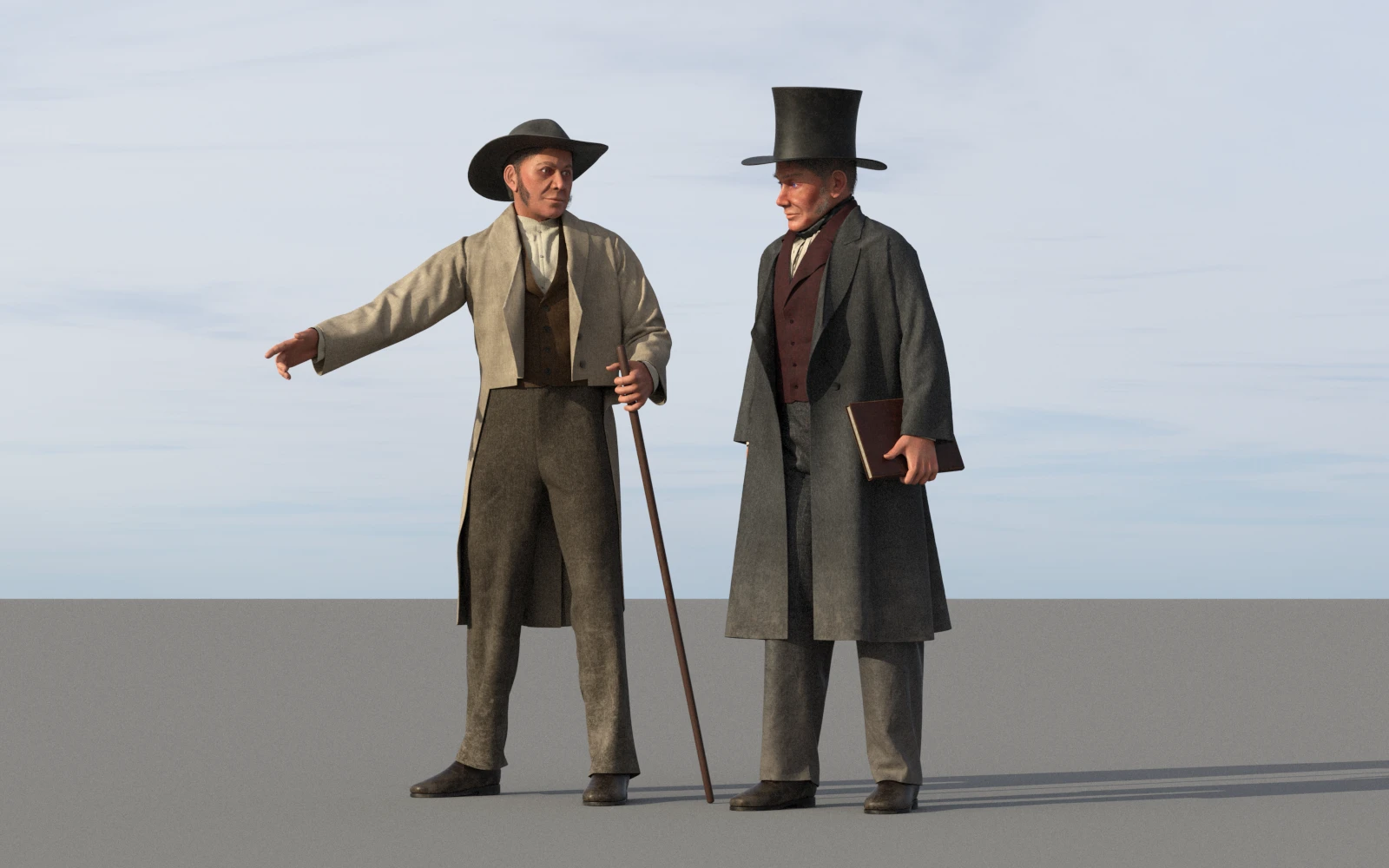
The Deep Cut scene has been populated with laborers drilling, chipping, and hauling rocks. Only two figures remain to be added. Both will represent real people.
In 1822 the four original Mountain Ridge contracts were subdivided into six contracts. The contract for Section 3, which commenced one mile south of the locks, was awarded to a local landowner named Darius Comstock.
The Comstocks, a family of Quakers from Massachusetts, had recently settled in Farmington, southeast of Rochester. Like many other newly arrived Yankees, several members of the family were restless to move further west.
An opportunity presented itself as land went on sale in the Holland Land Purchase west of the Genesee River. Nathan and Zeno Comstock purchased parcels in a sparsely settled area near Eighteen Mile Creek. This was a stroke of good fortune, for that very spot – which surveyors would soon designate as the place where the Erie Canal would ascend the Mountain Ridge – would become the village of Lockport.
Other members of the Comstock family joined them, including Darius, who, once canal construction began, would submit his bid for Section 3.
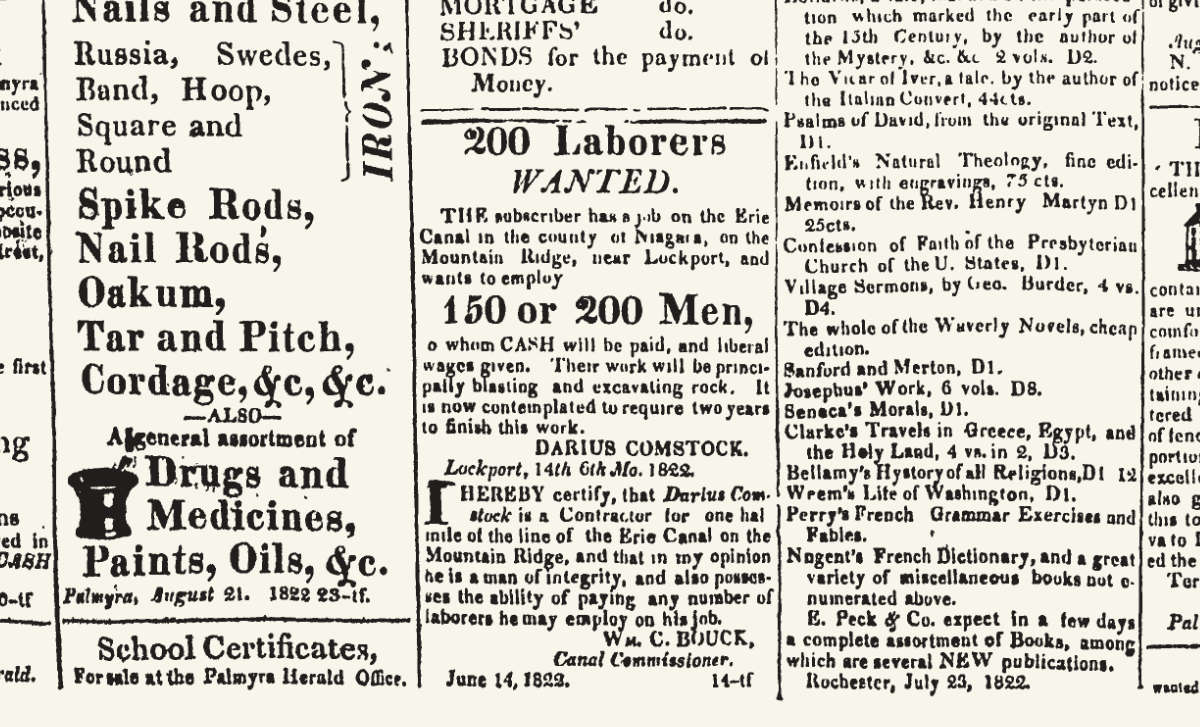
Besides being a pioneer, a savvy land speculator, a pillar of the community, and abolitionist, Darius Comstock was also, apparently, an inventor. A list published by the government in 1840 records a patent issued to him in March, 1825, for an “excavator.” What it looked like, and how it operated, will probably remain a mystery. Any records filed at the United States Patent Office would have been destroyed in the December 1836 fire (along with the records for Orange Dibble’s crane and many other early American inventions).
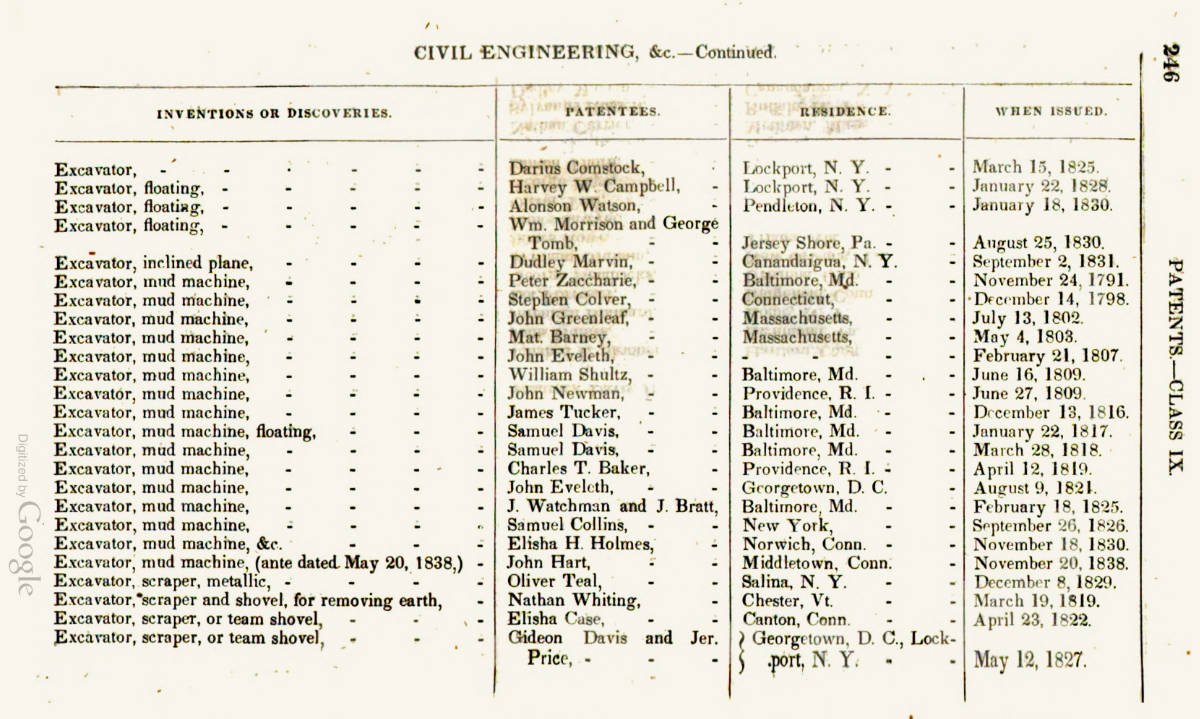
Whether Darius Comstock made use of his patent is not known. His section of the Deep Cut had been completed the year before. By 1825, even before the Erie Canal was finished, his attention was diverted further west, yet again. Soon he would relocate to help establish a new Quaker community in Adrian, Michigan.
Nathan Roberts, who in 1822 was put in charge of the canal between Lockport and Buffalo, had no formal training in engineering. In this regard he was no different than any of the other Erie Canal engineers. Every one of them learned their profession on the job.
Roberts had started his career as an itinerant mathematics teacher on the New York frontier. In Whitestown, where he taught school, he no doubt was very familiar with water navigation on the nearby Mohawk River. One of his students was Canvass White, who also would become an Erie Canal engineer.
Hired by Benjamin Wright to take part in the initial 1816 canal survey, Roberts’ gift for mathematics would continue to open doors. He quickly rose in the ranks of the fledgling engineering corps and is best remembered as the designer of Lockport’s iconic “Flight of Five” staircase locks.
Later, as a graduate of the “Erie Canal School of Engineering,” Roberts would take charge of other civil engineering projects, including a new railroad bridge over the Potomac River at Harper’s Ferry.
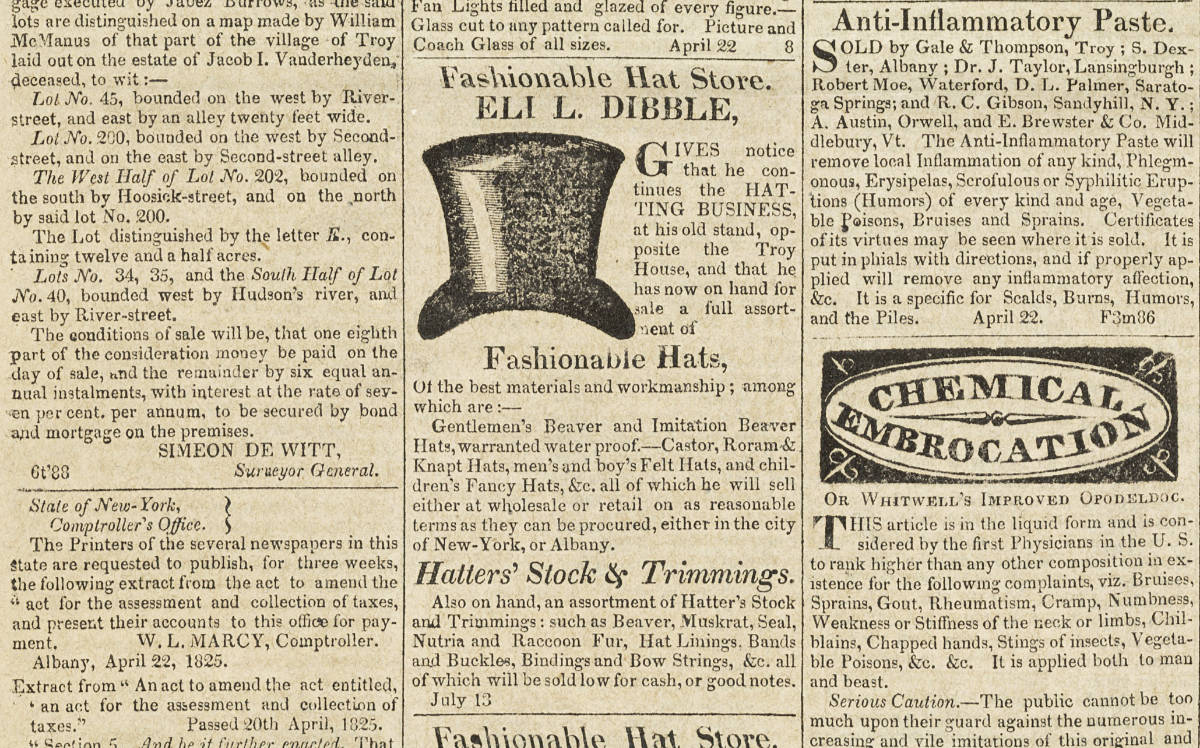
Designing the characters
Apparently there are no surviving images – paintings or silhouettes – of Darius Comstock, so I was free to make my own interpretation of how he may have looked. We do have a painting of Nathan Roberts, done some 20 years after the canal was built.
The clothing they might have worn is open to conjecture. For the purposes of the illustration, I’m assuming that, as successful men, they would have dressed the part. Though as a devout Quaker, Comstock would have worn clothing that was somewhat more plain.
But not homespun. Despite its location on the New York frontier, Lockport now was connected to eastern markets by the canal, which was navigable from the foot of the locks all the way to New York City. Items that previously would have been considered luxuries – including fine fabrics – were arriving daily.
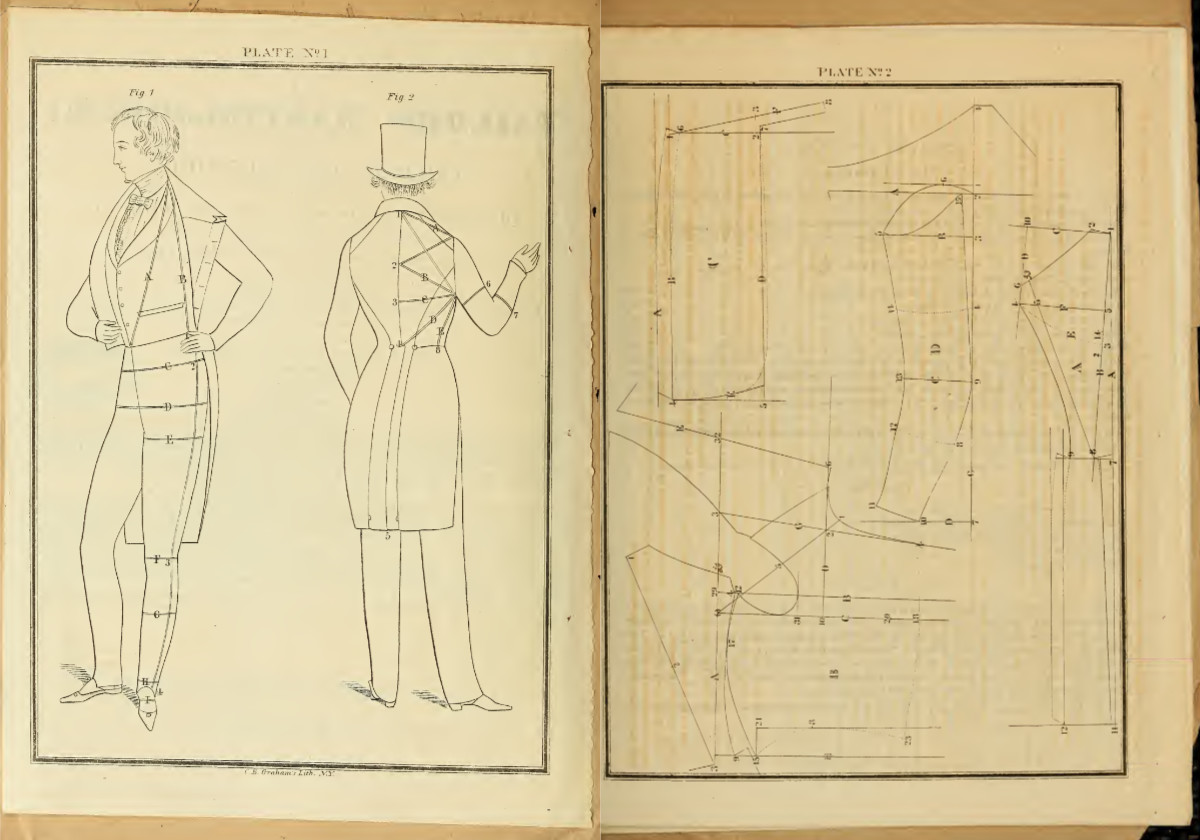
As for Roberts, well, as principal engineer he probably wore the three-piece suit of the day – pantaloons, waistcoat, and frock coat. And a top hat, of course, which in the early 19th century was considered de rigueur.
Fortunately, several 19th-century tailor’s guides – from The Taylor’s Complete Guide to The Tailor’s Friendly Instructor – have been digitized are are available online. The patterns they include are not like today’s patterns; they are really measuring guides. But (after some study and more than a little head-scratching) they can be picked apart and adapted.
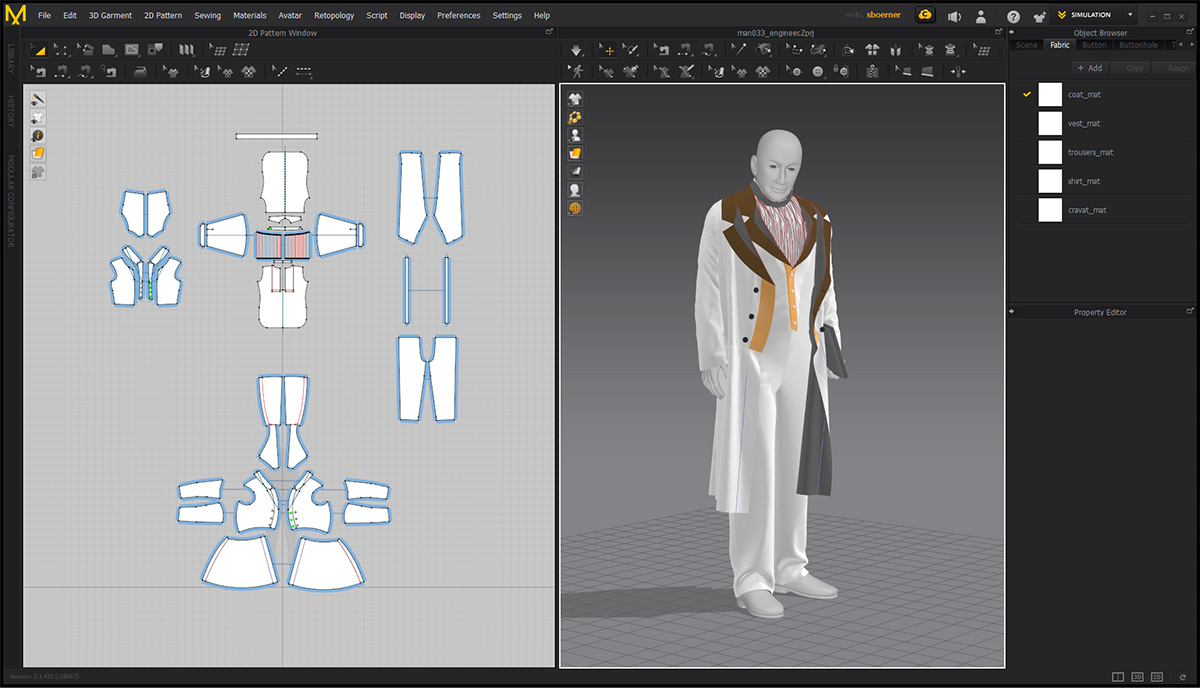
Using Marvelous Designer, a CAD-based software application, the patterns can be cut out, stitched together, and fit to the human character models. The program then handles the clothing simulation, taking gravity and fabric characteristics into account. The clothed characters are then moved into Terragen and shaded.
I’ve been using Marvelous Designer for a while now – all of the laborer’s clothing in the scene are variations of the same simple work shirt and trouser patterns – but these more upscale outfits were a challenge. It’s given me a much greater appreciation for anyone who works in the garment industry, especially designers, dressmakers and tailors. It’s a good thing my rough efforts are strictly digital.


Excellent use of software programs. This historical representation is certainly an amazing compilation of work. You have a tremendous grasp of understanding and projection with these models and renders. It is wonderful to watch your progress.
Thank you. The best part of this project is that I never know where the path might lead. It’s been an interesting journey so far.
Great attention to detail Steve! Do you still use Cheetah 3D? Marvelous Designer looks really good. I’ll check it out.
Thanks! I still use Cheetah from time to time. But mostly I use Maya and Silo for modeling now.